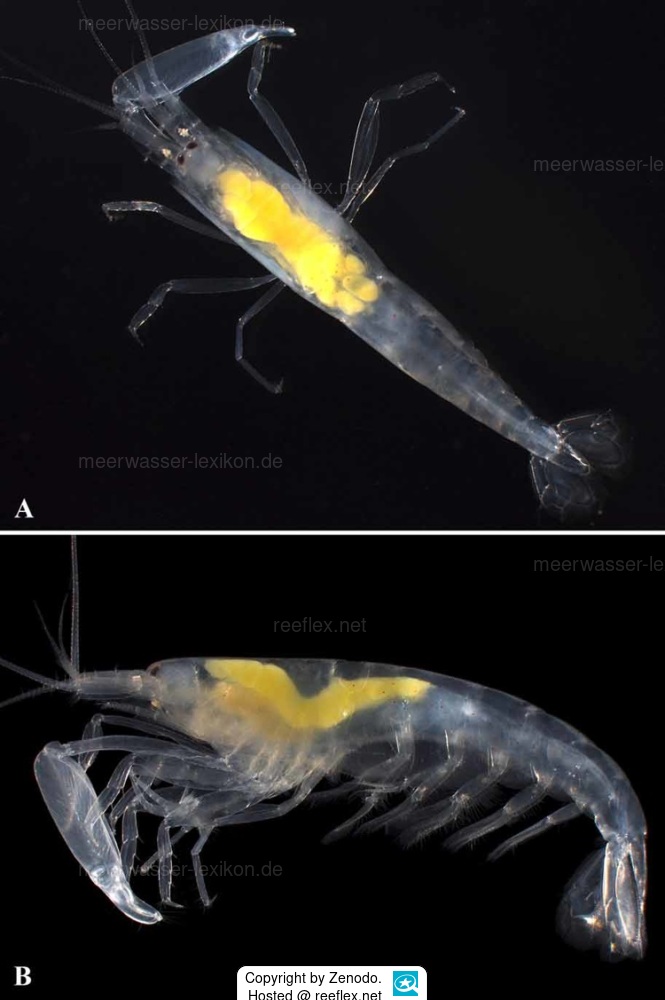Info
Richalpheus palmeri Anker & Jeng, 2006
In a lagoon around Moorea, French Polynesia, between Papetoai and Hotel Intercontinental, on a sandy area with hills and some rubble, near coral heads and numerous, black sea cucumbers (Holothuria (Halodeima) atra Jaeger, 1833) a very small pop crab was discovered.
To give an impression of the size of the crab, the carapace was just 3.35 mm!
This animal. as well as the holotype sighted in 3 - 4 meters depth, came from the burrow of unknown "burrow hosts", perhaps larger specimens of the genera Glypturus Stimpson, 1866 and Neocallichirus Sakai 1988, in any case Richalpheus palmeri is a beneficiary of other builders.
Color pattern. The small pop crab is uniformly hyaline white and semitransparent, your tiny red chromatophores barely visible on the abdomen, along the branchiostegial margin of the carapace, on the uropods and telson, and on the antennal peduncle.
The pale yellow ovaries are visible through the semitransparent carapace, extending from the carapace into the first abdominal somites.
Literature reference:
Anker, Arthur (2010): New findings of rare or little-known alpheid shrimp genera (Crustacea, Decapoda) in Moorea, French Polynesia.
Zootaxa 2403: 23-41, DOI: 10.5281/zenodo.194125
http://treatment.plazi.org/id/03C4BE4AFFFD075EFF19FD9AFD35F956
In a lagoon around Moorea, French Polynesia, between Papetoai and Hotel Intercontinental, on a sandy area with hills and some rubble, near coral heads and numerous, black sea cucumbers (Holothuria (Halodeima) atra Jaeger, 1833) a very small pop crab was discovered.
To give an impression of the size of the crab, the carapace was just 3.35 mm!
This animal. as well as the holotype sighted in 3 - 4 meters depth, came from the burrow of unknown "burrow hosts", perhaps larger specimens of the genera Glypturus Stimpson, 1866 and Neocallichirus Sakai 1988, in any case Richalpheus palmeri is a beneficiary of other builders.
Color pattern. The small pop crab is uniformly hyaline white and semitransparent, your tiny red chromatophores barely visible on the abdomen, along the branchiostegial margin of the carapace, on the uropods and telson, and on the antennal peduncle.
The pale yellow ovaries are visible through the semitransparent carapace, extending from the carapace into the first abdominal somites.
Literature reference:
Anker, Arthur (2010): New findings of rare or little-known alpheid shrimp genera (Crustacea, Decapoda) in Moorea, French Polynesia.
Zootaxa 2403: 23-41, DOI: 10.5281/zenodo.194125
http://treatment.plazi.org/id/03C4BE4AFFFD075EFF19FD9AFD35F956







 Zenodo
Zenodo

